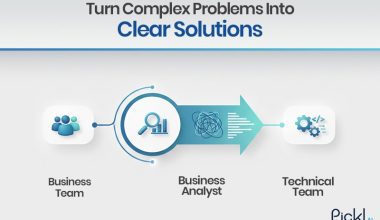Summary:
This blog explores the transformative power of university industry collaboration, highlighting how these partnerships drive innovation, enhance student employability, keep universities relevant, and provide industry with vital talent and research. Real-world examples demonstrate the mutual benefits and strategic importance of bridging academia and the corporate world for future success.
Introduction
In today’s rapidly evolving global landscape, the traditional silos between academia and the corporate world are increasingly dissolving. The concept of university industry collaboration is no longer a niche idea but a vital strategy for progress, innovation, and economic growth.
This symbiotic relationship fosters an environment where theoretical knowledge meets practical application, creating a powerful engine for discovery and development.
From groundbreaking research to shaping the next generation of professionals, the benefits of this synergy are profound and far-reaching.
Why Does University-Industry Collaboration Matter?
The challenges facing our world – from climate change to technological disruption – demand innovative solutions that neither universities nor industries can achieve alone. University industry collaboration bridges this gap.
Universities, with their focus on fundamental research, critical thinking, and a vast pool of talent, provide the intellectual bedrock. Industries, driven by market needs, commercialization goals, and real-world problems, offer the practical context.. This conjunction is where true innovation often sparks.
How Can Companies Improve Their Partnership Prospects with Universities?

For companies looking to engage in meaningful university industry collaboration, a strategic approach is essential. It’s not just about funding research; it’s about building a genuine, long-term relationship.
Clearly Define Objectives
What specific problem are you trying to solve? What kind of expertise are you seeking? Clear objectives make it easier for universities to identify relevant departments or researchers.
Invest in Relationships
Attend university events, guest lectures, and sponsor student projects. Building rapport with faculty and administrators is crucial.
Offer Diverse Opportunities
Beyond direct funding, consider internships, mentorship programs, equipment donations, or shared laboratory spaces.
Be Patient and Flexible
Academic timelines and research methodologies can differ from corporate ones. Understanding and respecting these differences is key to successful industry involvement in higher education.
Focus on Mutual Benefit
Highlight how the partnership will benefit students (e.g., career opportunities, skill development) and faculty (e.g., research funding, publication opportunities).
Communicate Openly
Establish clear communication channels and regular progress updates to ensure alignment and address any challenges proactively.
Benefits for Students: Gaining a Competitive Edge

University industry collaboration offers an invaluable bridge for students transitioning from academia to the professional world. They gain:
Real-World Experience
Students get hands-on experience working on actual industry challenges, applying theoretical knowledge to practical problems. This makes their learning far more tangible and impactful.
Enhanced Employability
Internships, co-op programs, and joint research projects directly expose students to potential employers. They develop sought-after skills, build professional networks, and often secure job offers before graduation, giving them a significant competitive edge. This direct industry involvement in higher education is crucial.
Mentorship Opportunities
Students benefit from guidance from industry experts, gaining insights into career paths, industry trends, and professional best practices.
Access to Cutting-Edge Technology
Collaborations often provide students with access to state-of-the-art equipment and technologies that might not be available within university labs.
Benefits for Universities: Staying Relevant and Funded

Universities also reap substantial rewards from robust university industry collaboration:
Increased Research Funding
Industry partnerships provide alternative funding sources for research projects, allowing universities to pursue ambitious studies that might otherwise lack resources.
Enhanced Research Relevance
Collaborations ensure that academic research addresses real-world problems and has practical applications, increasing its impact and visibility. This direct industry involvement in higher education ensures relevance.
Curriculum Development
Industry insights help universities update and tailor their curricula to meet current and future workforce demands, ensuring graduates possess the skills employers truly need.
Faculty Development
Faculty members gain opportunities to work on applied research, consult for companies, and bring practical industry experience back into the classroom, enriching their teaching and research portfolios.
Technology Transfer and Commercialization
Universities can commercialize their intellectual property through industry partners, generating revenue and ensuring that their discoveries benefit society.
Benefits for Industry: Driving Innovation and Talent Acquisition
For businesses, university industry collaboration is a strategic imperative that offers a multitude of advantages:
Access to Cutting-Edge Research and Expertise
Companies can tap into the latest academic research, specialized labs, and world-class faculty expertise to solve complex problems, develop new products, or improve existing processes without the overhead of building in-house capabilities.
Innovation and R&D Acceleration
Collaborations can significantly speed up R&D cycles by leveraging academic insights and resources, bringing new innovations to market faster.
Talent Pipeline Development
Partnerships create a direct pipeline to top talent. Companies can identify and recruit skilled graduates who are already familiar with their operations and culture through internships and project work. This pre-vetted talent reduces recruitment costs and onboarding time.
Reduced Risk and Cost
Outsourcing certain research and development tasks to universities can be more cost-effective than maintaining large internal R&D departments, especially for early-stage or high-risk projects.
Enhanced Brand Reputation
Associating with leading academic institutions can boost a company’s reputation for innovation, social responsibility, and commitment to education.
Real-World Success Stories: Industry-Academia Partnership Examples
Numerous industry-academia partnership examples showcase the transformative power of university industry collaboration:
Stanford University and Google
Their long-standing relationship began with early research funding from Google to Stanford professors. This collaboration has fueled innovation in search algorithms, artificial intelligence, and numerous other fields, demonstrating how fundamental academic research can lead to world-changing products.
MIT and Novartis
This partnership focused on biomedical research, combining MIT’s expertise in engineering and life sciences with Novartis’s pharmaceutical development capabilities. The goal was to accelerate drug discovery and develop novel therapeutic approaches.
Pickl.AI and Lovely Professional University (LPU)
This is yet another impactful university-industry collaboration, Pickl.AI’s partnership with institutions like Lovely Professional University (LPU). Pickl.AI, a company at the forefront of AI and data science, actively engages with LPU to provide students with invaluable hands-on experience.
Automotive Industry and Engineering Schools
Collaborations on autonomous driving, electric vehicle technology, and advanced materials development are rampant, with universities providing fundamental research and testing facilities, and industry providing the context for commercial application.
These industry-academia partnership examples underscore the versatility and effectiveness of such collaborations across diverse sectors.
Conclusion: Building the Future, Together
The future of innovation, education, and economic prosperity lies in fostering robust university industry collaboration. By breaking down traditional barriers and working together, universities and industries can create a powerful synergy that benefits students.
This proactive industry involvement in higher education is not merely an option but a strategic imperative, shaping a future where knowledge translates directly into progress. It’s about building the future, hand in hand.
Frequently Asked Questions
What are the benefits of collaboration between universities?
Collaboration between universities fosters knowledge sharing, multi-disciplinary research, and economies of scale. It allows institutions to pool resources, tackle larger research questions, offer broader course selections, and enhance their collective global reputation, ultimately enriching the academic experience for all.
Why do universities collaborate with industry?
Universities collaborate with industry to secure research funding, ensure their curriculum remains relevant to workforce needs, provide students with practical experience, and commercialize their intellectual property. It helps universities stay at the forefront of innovation and societal impact.
What is the importance of collaboration between industry and colleges?
Collaboration between industry and colleges is vital for bridging the gap between theoretical knowledge and practical application. It drives innovation, provides industry with access to research and talent, and equips students with the skills and experience necessary for successful careers, boosting economic growth.
Why is collaboration between academia and industry important for students?
For students, university industry collaboration is crucial as it offers real-world project experience, enhances employability through internships and networking, provides mentorship from industry professionals, and exposes them to cutting-edge technologies and workplace environments, giving them a significant competitive edge.



